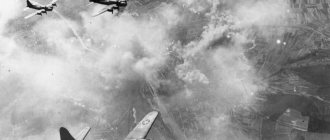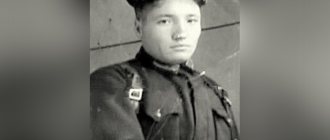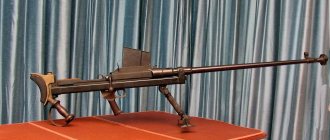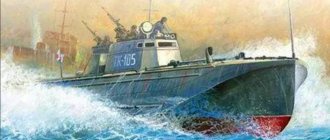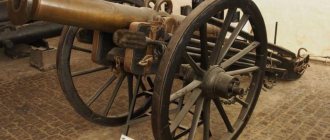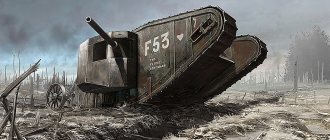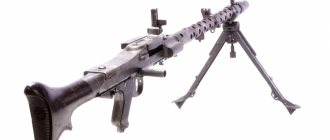Autocannon type
| 20 mm Oerlikon gun | |
| Modern Oerlikon gun (Oerlikon 20 mm/85 KAA) on a Royal Navy warship | |
| Type | Autocannon |
| Place of origin | Switzerland / Italy |
| Service history | |
| In service | 1937–present |
| Used | Different |
| Wars | World War II, various |
| Production history | |
| Designer | Reinhold Becker |
| Designed by | 1935 |
| Manufacturer | Oerlikon |
| Produced | 1937– |
| No. built | 124 734 [1] |
| Options | Oerlikon FF MG FF gun |
| Characteristics | |
| Weight | L70 Total gun barrel weight: 68.04 (150.0 lb) Less bolt: 20.865 kg (46.00 lb) L85 Empty: 92.0 (202.8 lb) Loaded with 200 rounds: 182.0 kg (401.2 pound) |
| Length | L70 Overall Dimensions : 2210 mm (87 in) Barrel Length: 1400 mm (55 in ) L85 Overall Dimensions : N/A Barrel Length: 1700 mm (67 in) |
| Shell | L70: 20 × 110 mm RB L85: 20 × 128 mm |
| Projectile weight | HE: 123 g (4.3 oz) HE/T: 116 g (4.1 oz) |
| Caliber | 20 mm (0.787 in) |
| Barrels | Single barrel (progressive right hand parabolic twist, 9 flutes) |
| Action | Return API |
| Height | Manual, -15°/+90° |
| Traverse | Manual, full 360° |
| Rate of fire | L70: Cyclic: 450rpm Practical: 250-320rpm L85: Cyclic: 900 to 1000rpm |
| starting speed | L70: 820 m/s (2,700 ft/s) L85: 1,050 m/s (3,400 ft/s) |
| Effective firing range | Against low flying aircraft (HE projectile ) L70: 914 m (1,000 yd) L85: 1,500 m (1,600 yd) |
| Maximum firing range | HE round at 45° L70: 4389 m (4800 yd) L85: 6800 m (7400 yd) |
| Feeding system | 60-round cylindrical magazine, later adapted for a belt-fed pistol. |
Oerlikon 20 mm gun
is a series of autocannons based on the original German Becker Type M2 20 mm cannon design that appeared at the very beginning of the First World War. It was produced widely by Oerlikon Contraves and others, with various models used by both Allied and Axis forces during World War II, and many versions are still in use today. [2] [3]
History[edit]
Origins[edit]
During World War I, German industrialist Reinhold Becker developed a 20 mm caliber gun, now known as the 20 mm Becker, using the Advanced Primer Ignition blowback method of operation (breech-action API). It used the 20×70mmRB cartridge and had a cyclic rate of fire of 300 rpm. On a limited scale it was used as an aircraft weapon on Luftstreitkräfte
and as an anti-aircraft gun towards the end of that war.
Since the Treaty of Versailles prohibited further production of such weapons in Germany, the patents and design work were transferred in 1919 to the Swiss firm SEMAG ( Seebach Maschinenbau Aktien Gesellschaft
), located near Zurich.
SEMAG continued to develop this weapon and in 1924 released the SEMAG L
, a heavier weapon (43 kg) that fired more powerful 20×100mmRB ammunition with a slightly higher rate of fire, 350 rpm.
In 1924, SEMAG failed. Oerlikon, named after the Zurich suburb of Oerlikon where it was based, then acquired all rights to the weapons, as well as SEMAG's production equipment and employees.
Oerlikon[edit]
In 1927, Oerlikon S
This fired an even larger cartridge (20x110RB) to achieve a muzzle velocity of 830 m/s (versus 490 m/s for the original Becker 20x70RB gun) at the cost of increased weight and a reduced rate of fire (280 rpm). The purpose of this development was to improve the characteristics of the gun as an anti-tank and anti-aircraft weapon, which required a higher muzzle velocity. In 1930, an improved version, known as 1S, appeared.
In parallel, the development of guns of three sizes with different ammunition and barrel lengths, but very similar mechanisms, continued. In 1930, Oerlikon reconsidered the use of its weapons in aircraft and introduced the AF
and
AL
, intended for use in flexible installations, i.e., manually aimed by the gunner. The 15-round box magazine used in earlier versions of the gun was replaced by a 15- or 30-round drum magazine.
In 1935, the company took an important step by introducing a series of guns designed to be mounted on the wings of fighter aircraft. Designated FF from Flügelfest, which
meaning "wing-mounted", this weapon was again available in three sizes, designated
FF
,
FFL
and
FFS
. The FF fired a slightly larger cartridge than the AF, the 20x72RB, but the weapon's main improvement was a significant increase in rate of fire. The FF weighed 24 kg, had a muzzle velocity of 550 to 600 m/s with a rate of fire of 520 rpm. The 30 kg FFL fired a projectile with a muzzle velocity of 675 m/s at a rate of fire of 500 rpm. And the FFS, which weighed 39 kg, had a high muzzle velocity of 830 m/s with a rate of fire of 470 rpm.[4]
In addition to changes to the wing-mounted and remote-controlled gun design, larger drums were introduced as magazines could not be exchanged in flight. The FF series had 45, 60, 75 and 100 round drum sizes available, but most users chose the 60 round drum.
The 1930s were a period of global rearmament, and a number of foreign firms received licenses for the Oerlikon family of aircraft guns. In France, Hispano-Suiza developed the FFS as the Hispano-Suiza HS.7 and Hispano-Suiza HS.9 for installation between the cylinder banks of their V-12 engines. In Germany, Ikaria modified the FF gun under the name MG FF, firing 20x80RB ammunition. And the Imperial Japanese Navy, having evaluated all three guns, ordered the development of the FF and FFL as the Type 99-1 and Type 99-2.
Implementation of FFS improvements in a new anti-aircraft gun produced in 1938 on the Oerlikon SS
. Oerlikon implemented a further improvement in the rate of fire on the 1SS 1942 and 2SS 1945, reaching 650 rpm. However, it was an original SS gun that saw widespread use as an anti-aircraft gun, particularly used extensively by the Allied navies during World War II.
This gun used a 400-grain (26-gram) charge of IMR 4831 smokeless powder to fire a 2,000-grain (130-gram) projectile at a velocity of 2,800 feet (850 meters) per second. [5]
World War II[edit]
Royal Navy Oerlikon gunner at his gun mount aboard the Dido-class cruiser HMS Dido in 1942
The Oerlikon FF was installed as armament on some fighter aircraft of the 1930s, such as the Polish PZL P.24 G. Local derivatives of the Oerlikon gun were used much more widely in aircraft, on ships and on land. In the air, the Ikaria MG FF was used as armament on a number of German aircraft, the most famous of which is the Messerschmitt Bf 109. The Japanese Navy also used their copy of the FF, designated the Type 99 Mark One gun, on a number of types including the Mitsubishi A6M Zero. Later in the war they also equipped fighters, including the Zero, Type 99 Mark Two, with a version of the more powerful and faster-firing Oerlikon FFL.
The French company Hispano-Suiza was a manufacturer of aircraft engines and sold motorcycle guns.
a combination of its 12X and 12Y engines with an HS7 or HS9 gun mounted between the cylinder banks. The cannon fired through a hollow propeller hub, which was raised above the engine crankcase by a gear train design. Such weapons were installed on the Morane-Saulnier MS406 and some other types. Similar German MG FF installations were not successful.
Diagrams showing the basic design and color coding of British HE/Incendiary, Tracer and HE/Incendiary/Tracer shells for the 20mm Oerlikon gun
Oerlikon is best known for naval applications. The Oerlikon was initially not accepted by the Royal Navy as a short-range anti-aircraft gun. Throughout 1937–1938, Lord Louis Mountbatten, then a captain in the Royal Navy, campaigned single-handedly within the Royal Navy to arrange an impartial trial of the 20 mm Oerlikon gun, but it was all in vain. It was not until the Commander-in-Chief of the main fleet, Admiral Sir Roger Backhouse, was appointed First Sea Lord that Mountbatten's efforts bore fruit. In the first half of 1939, a contract was signed in Switzerland for the supply of 1,500 guns. However, due to delays and the subsequent fall of France in June 1940, only 109 guns reached the United Kingdom. All Oerlikon guns imported from Switzerland in 1940 were mounted on different carriages and used as light anti-aircraft guns on land.
Just weeks before the fall of France, the Oerlikon factory approved production of its weapons in Britain under license. The Royal Navy managed to smuggle the necessary drawings and documents out of Zurich. Production of the first British-made Oerlikon guns began in Ruislip, London, in late 1940. The first guns were delivered to the Royal Navy in March or April 1941. The RAF Regiment made extensive use of Oerlikon guns in counteraction. -aircraft role. They were the main armament of its light anti-aircraft squadrons in North Africa, the Middle East, Italy and North-West Europe until the introduction of the Bofors. 40/L60 40 mm guns from 1943, although many squadrons retained a mixture of guns until the end of World War II. Squadrons in the Far East were equipped exclusively with Oerlikon.
1945, row of 20 mm Oerlikon cannons aboard the Essex-class aircraft carrier USS Hornet
The Oerlikon gun was installed aboard US Navy ships from 1942, replacing the M2 Browning machine gun, which lacked range and firepower, and largely supplanted the 1.1"/75 caliber gun, which was heavier and had less mechanical reliability . the role of a naval anti-aircraft gun, providing effective protection at short ranges (in practice up to 1.5 km), at which heavier guns had difficulty tracking the target. The gun was eventually abandoned as a primary anti-aircraft weapon due to its inability to stop power against heavy aircraft and against Japanese kamikaze
during the Pacific War. It was largely supplanted by the Bofors 40 mm gun and the 3"/50 Mark 22. It provided a useful increase in firepower over the .50 cal machine gun when adapted and fitted to some aircraft. However, it had some problems with the ammunition feed system jamming.
The Royal Canadian Navy popularized the use of the Oerlikon gun as an anti-ship and anti-submarine gun - while it was not effective against the armor of most large ships, it was used widely and effectively against submarines, and on the decks of large ships. A few corvettes were equipped with the weapon towards the end of the war, but it appeared more frequently on frigates and destroyers at the time.
The Oerlikon was also used as the basis for the Polsten pistol, developed by Polish engineers in exile in the United Kingdom. The gun entered service in 1944 and was used until the 1950s, among others, on Cromwell tanks [ citation needed
] and early model Centurion tanks.
Romania purchased 45 from Germany in the first half of World War II. [6]
Post-war[edit]
| This section needs expansion . |
It is still used today by some naval units, theoretically as a last resort in air defense, but is primarily used to fire warning shots or disable small vessels.
Oerlikons in the Soviet Union
Almost 2,000 machine guns were supplied to the Soviet Union under Lend-Lease. The presence of "Oerlikons" was also among the weapons that were supplied for warships. The Black Sea theater of military operations had only 46 units. The main number of guns was in the Northern and Baltic fleets of the Union. The Land Red Army massively used captured Polish, German, Hungarian and Romanian models.
In the 30s, when the Soviet Union purchased aircraft engines from the French Hispano-Suiza, questions were also raised about the purchase of Hispano-Suiza aircraft guns (French licensed Oerlikons), including the kinematics of ammunition, fastening systems, etc. However, the Soviet management decided to develop their own samples of 20-mm aircraft cannons. The ShVAK system became such a 20-mm cannon.
Description[edit]
Oerlikon rifle scope
Very unusual for a powerful autocannon, the Oerlikon and its derivatives have blowback operation: the bolt is not tied to the breech of the cannon at the moment of firing. An unlocked, simple blowback design is common on much lighter weapons such as small-bore semi-automatic pistols. Locking is not required because with such low-power cartridges, the static inertia of the bolt or bolt and bolt—the physical tendency of heavy components to resist rapid acceleration—is sufficient for the projectile to leave the muzzle and the gas pressure in the barrel to be reduced to a safe level before the bolt opens. (although the bolt spring also prevents the bolt from opening, in practice its contribution is too small to matter). [7]In contrast, 20mm rounds are too powerful and effective autocannon barrels are too long for this basic system to be practical; therefore Oerlikon uses Advanced Primer Ignition(API) to increase bolt resistance. In a blowback API weapon, the firing pin fires the cartridge while the bolt is still moving forward, so gas pressure must also overcome the forward momentum of the bolt before it can push it back. To facilitate this, the Oerlikon chamber is longer than necessary to accommodate the cartridge, and the front of the bolt, which has the same diameter as the case, actually fits into this expanded chamber behind the cartridge before firing. As a result, when a shot occurs, the direct force of the bolt and spring acts against the force of the powder gases until the latter overcomes the first and begins to push the cartridge case, bolt and spring back. If the bolt were to stop at the entrance to the chamber, as in a simple blowback shotgun, this impulse would be neutralized; instead, through continuous motion, the impulse acts to counteract the propellant gases and slow the reverse movement of the cartridge and bolt. Synergistically with this, the second advantage of this unusual device is that, after firing, the bolt and case travel a short but significant distance back before the end of the bolt reappears and the case in turn begins to leave the chamber; and this, combined with the deceleration, allows enough time for the gas pressure to drop to the required safe level. This system allows recoil to be used in much more powerful weapons than normal. However, compared to a weapon with a locking mechanism, it is necessary to use a fairly heavy bolt; while in order to give this heavy bolt sufficient forward velocity, a large spring is required (and Oerlikons in particular, this component must be wrapped around their barrels.) These features will limit the rate of fire of such weapons unless other steps are taken - as in the latest model Japanese 99 Mark 2. [4]
This unique chamber and bolt design requires the use of a distinctively shaped cartridge: the case has straight sides, a very small neck, and a fluted rim. The straight sides allow the body to slide back and forth within the cylindrical chamber. In this case, the neck is not supported and therefore expands when the case is fired, and the notched rim allows the end of the bolt, with its extractor grip engaged on the rim, to fit into the chamber. To facilitate the movement of the cartridge case, the ammunition had to be lubricated, which was a disadvantage of the Oerlikon gun. An alternative developed during World War II was the so-called grooved chamber, which had grooves that allowed propellant gas to leak between the chamber wall and the housing, taking on the role of lubricant. [4]
Rear view of the Oerlikon twin gun mount
Twin Oerlikon gun mounts from the Tribal-class destroyer HMCS Haida
Ammunition is typically fed from a 60-round drum magazine on top of the gun. During prolonged shooting, the magazine must be changed frequently, which reduces the effective rate of fire. To overcome this limitation, belt-fed versions of the gun were developed. The trigger in the right grip controls firing. Used cartridges are ejected from under the breech.
Different countries and services have used multiple types of mounts for the same basic weapon. In a typical single-barrel naval design, it rotates freely on a fixed mount on a pedestal with a flat armor shield providing some protection to the crew. The cannon is aimed and fired by a shooter using, in its simplest form, a ring sight. The gunner is attached to the weapon with a belt and shoulder pads. For this reason, there were some mounts with height adjustment capabilities to accommodate different sized gunners. The “piece leader” designates targets, and the feeder changes spent magazines.
During World War II, two- and four-man Oerlikon mounts were developed for both the Army and Navy. The Royal Navy used a hydraulically driven twin gun mount. The US Navy used a quad mount developed for PT boats by Elco Naval Division, Electric Boat Company called the Elco "Thunderbolt" Mount. Prototypes were built and tested in late 1942 and were deployed in service on several Elco PT boats in the Mediterranean. [8] [9] It was also installed experimentally on the battleships Arkansas, Colorado, Maryland, West Virginia, Washington, Massachusetts and the training ship Wyoming.
Versions [edit]
Japanese version of the gun in the stowed position.
In tow is a twin 35mm Oerlikon cannon from the Republic of Singapore Air Force.
Japanese ZSU Type 87
Finnish ItPsv 90
Anti-aircraft gun PZA Loara-A
- GDF-001
/
2 ZLA/353 MK
: XABA sight - GDF-002
: Introduced in 1980. Improved Ferranti sight and digital data bus. The gun has 112 rounds in readiness and 126 in reserve (238 rounds in total). - GDF-003
: Minor improvements including protective guards and automatic weapon lubrication. - GDF-005
: Introduced in 1985.
Gunking
computer sight with a laser rangefinder and a digital fire control system. Complex nutrition and diagnostics. 280 rounds per gun and automatic reloader. - GDF-006
: GDF-001/002/003 with updated
AHEAD
. - GDF-007
: The GDF-005 is upgraded with the
AHEAD
. - GDF-009
: Introduced at IDEF 2015 held in May 2015 in Istanbul. Today, its appearance has changed significantly, although the installation has retained the design of the original production versions of the systems, unlike other options, it uses an internal power source. Model GDF-009 is based on a four-wheel carriage. , and in a combat position it rises above the ground on three stabilizers. It is also equipped with an automatic leveling system that can compensate for a maximum tilt angle of up to 7°. The front of the carriage has a built-in battery that functions as the gun's power supply and can be charged from an external source. if it is needed. [21] - AHEAD
: An update for the GDF series guns, built around a special projectile that explodes at a pre-calculated point in front of the target, sending a cone of 152 tungsten sub-shells towards the target. Used by Canada, Pakistan, Greece, Oman, Spain, Taiwan and Chile (not confirmed). - Gepard
: Self-propelled (SPA) version of the system, based on the Leopard 1. - MAA-01
: Myanmar indigenous variant with Chinese GDF guns, similar to Type-90. [22] - Marksman
: A self-propelled version of the system, based on the Marksman turret, which could be mounted on numerous tank chassis. The only model that went into production was a version based on the T-55 chassis for Finland, seven systems were in combat reserve. The Marksman turrets will be transferred to the Leopard tank chassis. - Type 87
: Japanese self-propelled gun using the system. - PZA Loara
: Polish air defense system based on the PT-91 tank. - Type 90 (PG99)
: Chinese licensed copy of GDF-002. [23] The PG99 is a towed anti-aircraft gun suitable for point and coastal air defense. It is typically deployed near military bases, airfields, tunnels, islands and along the coast to protect sea land of communications (SLOC), ports, bridges and other important installations. [24] - CS/SA1
: Chinese update of GDF-002. [25] Mounted on the 6×6 SX2190 truck, the PG99 (CS/SA1) is a self-propelled variant of the Type 90 35mm anti-aircraft system, previously only available as a towed anti-aircraft gun. [26] - Type 09 SPAAA
: Self-propelled version of the system based on the Type 90. First appeared at the 2015 China Victory Parade. - Samavat
: The Iranian version of this weapon has a night vision scope and is used with the Skyguard and Super Fledermaus FC radars. - Amoun
: Egyptian version of Skyguard & Sparrow SAM.
Options [edit]
| Type | F | L | S [10] | FFF | FFL | FFS |
| Caliber | 20 mm | |||||
| Action | Return API | |||||
| Weight, kg] | 30 | 43 | 62 | 24 | 30 | 39 |
| Length [mm] | 1350 | 1820 | 2120 | 1350 | 1880 | 2120 |
| Barrel length [mm] | 800 | 1200 | 1400 | 760 | 1200 | 1400 |
| Rate of fire [rpm] | 450 | 350 | 280 | 520 | 500 | 470 |
| Initial bullet speed [m/s] | 550–575 | 670–700 | 835–870 | 550–600 | 675–750 | 830 |
| Cartridge type | 20x 70RB | 20x 101RB | 20x 110RB | 20x 72RB | 20x 101RB | 20x 110RB |
| Projectile weight | 127 g | |||||
| Feeding system | 15-round box magazine | 30, 45, 60, 75, 100 round drum or 15 round box magazine | ||||
Ammunition[edit]
Romanian soldiers fire TP shells.
| NATO designation | HE-T/HEI-T | HE/HEI | University (BF) | SAPHEI / SAPHEI-T | APDS/FAPDS | TP-T / TP | UPCOMING |
| Projectile mass | 535 g (18.9 oz) | 550 g (19 oz) | 550 g (19 oz) | 550 g (19 oz) | 375 g (13.2 oz) | 550 g (19 oz) | 750 g (26 oz) |
| Explosive | 98 g (3.5 oz) | 112 g (4.0 oz) | 70 g (2.5 oz) | 22 g (0.78 oz) | n/a | n/a | n/a |
| Propellant | 330 g (12 oz) | ||||||
| Full round | 1565 g (55.2 oz) | 1580 g (56 oz) | 1580 g (56 oz) | 1552 g (54.7 oz) | 1440 g (51 oz) | 1580 g (56 oz) | 1780 g (63 oz) |
| starting speed | 1,175 m/s (3,850 ft/s) | 1,175 m/s (3,850 ft/s) | 1,175 m/s (3,850 ft/s) | 1,175 m/s (3,850 ft/s) | 1,440 m/s (4,700 ft/s) | 1,175 m/s (3,850 ft/s) | 1,050 m/s (3,400 ft/s) |
Designation
:
- HEI
: High Explosive Incendiary (
-T -
Tracer) - SAPHEI
: semi-armor-piercing
high
explosive incendiary - FAPDS
: Fragile Armor Penetrating Clog - AHEAD
: Anti-missile rounds that fire "152 heavy metal tungsten submunitions." - TP
: Target Practice (
-T -
Tracer)
Links[edit]
- Budge, Kent G. (2014). "20 mm Oerlikon light anti-aircraft gun". Online Encyclopedia of the Pacific War
. Retrieved May 30, 2022. - "Switzerland Oerlikon 20 mm / 70 (0.79″) Mark 1" ". NavWeaps.com
. January 14, 2011. Retrieved September 24, 2011. - "England 20 mm/85 (0.79″) GAM-BO1". NavWeaps.com
. June 21, 2008. Retrieved October 23 +2011. - ^ abc Williams (2000).
- Johnson (1944), Appendix.
- Axworthy Mark (1995). Third Axis, Fourth Ally: The Romanian Military in the European War 1941–1945
. London, UK: Arms and Armor Press. paragraph 30. ISBN 978-1-85409-267-0. - "Machine Gun", Volume4, George M. Chinn, page 12
- Elco Naval Division Memo. General information about the Elco Thunderbolt Mount, Mark II
, Bayonne, New Jersey: December 1, 1942. - Motor Torpedo Boat Squadron Twenty-nine Memo in SNO. Electric Boat Company Thunderbolt Quadruple 20 MM Powered Mount installed on PT, Operations Report
, New York, New York: February 19, 1945. - https://www.airwar.ru/weapon/guns/oerlikon.html
Bibliography[edit]
- Campbell, N. J. (1985). Naval weapons of World War II
. Annapolis: Naval Institute Press. ISBN 978-0-87021-459-2. - Friedman, Norman (2006). The Naval Institute's Guide to the World's Naval Weapons Systems. Annapolis: Naval Institute Press. pp. 478–480. ISBN 978-1-55750-262-9.
- Heller, Daniel (2002). Zwischen Unternehmertum, Politik und Überleben.
Emil G. Bührle and di Werkzeugmaschinenfabrik Oerlikon, Bührle & Co 1924–1945 [
Between entrepreneurship, politics and survival: Emil G. Bührle and the machine tool factory Oerlikon, Bührle & Co.
1924-1945 ] (in German). Frauenfeld, Switzerland: Verlag Huber. ISBN 978-3-71931-277-0. - Johnson, Melvin M., Jr. (1944). Rifles and Machine Guns: A Modern Guide to Infantry and Aircraft Weapons
. New York: William Morrow and Co. - Paul, Gerald (1978). Secret Weapons of World War II
. New York: Ballantine Books. ISBN 0-345-27895-X. - Williams, Anthony G. (2000). Rapid Fire: Development of the Automatic Cannon, Heavy Machine Guns, and Their Ammunition for Armies, Navies, and Air Forces
. Shrewsbury, UK: Airlife. ISBN 978-1-84037-122-2. - "Navy Day". World of combines
.
Chicago: Harvester Press. 35
(12): December 12, 1944
Afghan war
During the Afghan war, the use of Oerlikons by detachments of Afghan Mujahideen was noted. The first deliveries of Oerlikons were recorded in January 1985[17]. On July 12, 1987, a special forces group of the 186th separate special forces detachment of the 22nd Regiment Regiment, under the command of Senior Lieutenant Oleg Onishchuk, destroyed a caravan in which, in addition to several dozen small arms, several mortars, grenade launchers and a lot of ammunition, it was captured from enemy 20-mm automatic anti-aircraft gun Oerlikon, fully equipped and with accompanying documentation. For this, Onischuk was awarded the Order of the Red Banner[18].
Operators[edit]
Deployed Swiss GDF-005
- Argentina: 38 GDF-002 Army with Skyguard, 6 GDF-002 Air Force with Super Fledermaus FC radar
- Austria: 74 GDF-005 Army, 18 GDF-005 Air Force with 37 Skyguard FC radar
- Bahrain: 12 GDF-005 units used with Skyguard FC radar.
- Bangladesh: 2 Oerlikon GDF-009 anti-aircraft systems with Skyguard 3 fire control radar were ordered in 2022. [27] [ verification required
] In 2022, the weapon systems were tested at Cox's Bazar. [28] [29] - Brazil: 38 GDF-001s with updated Super Fledermaus radars and Brazilian Skyguard FC radars. For installation with Saber M60 radar.
- Cameroon: GDF-002 and Type-90 units [30]
- Canada: 20 GDF-005 and 10 Skyguard FC radars in stock for emergency use
- Chile: 24 units GDF-005/007 used with Skyguard FC radar. [31]
- China: Licensed copy of GDF-002 as Type 90, 200+ units with Skyguard FC radar [32]
- Colombia: 75 GDF-005 units in reserve
- Cyprus: 30 units of GDF-005 used with Skyguard and Aspide SAMs
- Ecuador: 30 units GDF-003
- Egypt: 72 Amoun units used with Skyguard and Sparrow SAM.
- Finland: 16 units. Known as 35 ITK 88
- Germany: On the Flugabwehrkanonenpanzer Gepard (self-propelled anti-aircraft gun)
- Greece: 24 GDF-002 upgraded to GDF-006 AHEAD, 12 upgraded Skyguard FC radars, used with Sparrow SAM
- Iran: 92 units of GDF-002. Iran claims to manufacture/repair these guns. Used with Skyguard and Super Fledermaus FC radars.
- Indonesia: 8 GDF
- Japan: About 70 GDF-001 units used with updated Super Fledermaus FC radars. Made in a joint venture with Japan Steel Works for the 35 mm gun and Mitsubishi Electric Corporation for the rest of the system [33] 52 On Type 87 (self-propelled anti-aircraft gun)
- South Korea: 36 GDF-003 units used with Skyguard FC radar.
- Kuwait: 12 GDF-005 (Amoun) used with Skyguard and Sparrow SAMs
- Malaysia: 28 GDF-005 units used with Skyguard FC radar.
- Myanmar: 10 locally produced MAA-01 (Type-90) as of 2022. [22]
- Nigeria: 16 units GDF-002
- Oman: 10 modified GDF-005 AHEAD units used with Skyguard FC radar.
- Pakistan: About 180 GDF-005 units, 60 AHEAD units modified, used with Skyguard FC radar.
- Romania: 43 Flugabwehrkanonenpanzer Gepard systems and 72 GDF-003 units
- Saudi Arabia: 128 modified GDF-005 units. Used with Skyguard FC radars.
- Singapore: 34 × GDF-001. [34]
- South Africa: 102 GDF-002 (100 Mk1 GDF-002 sold for $500,000 in 2004) + 48 modified GDF-005. Upgrade to Skyshield system, GDF-006 AHEAD and GDF-007 AHEAD standards by 2022. Some 169 Oerlikon GDF-00? were purchased by the SADF along with 75 Super Fledermaus FC radars.
- Spain: 92 GDF-007, upgraded from GDF-005 between 2003 and 2006. With 27 Skydor radars and 18 Skyguard FC radars. [35]
- Switzerland: About 24 modified GDF-005 units (out of 264 GDF-001/002 units) used with Skyguard FC radars.
- Thailand: 8 GDF-007, used with 4 Skyguard 3 FC radars.
- Taiwan: 24 Skyguard "Sky Sentinel" fire control radars linked to approximately 50 twin 35 mm GDF-003 cannons. Upgraded to GDF-006 to fire AHEAD rounds since 2009.
- Türkiye: Manufactured under license from MKEK [36] 120 units GDF-003. [37] Promoted to Skyguard. [38]
- United Arab Emirates: 30 units GDF-005
- UK: 15 twin 35mm GDF-002 guns were captured during the Falklands War along with six Skyguard radars and one Super Fledermaus FC radar. One of the Skyguard radars was destroyed by a Shrike missile strike during the conflict. Currently, four of these Skyguard fire control systems are used to detect UK military aircraft exceeding flight restrictions over residential areas. [39] The GDF-002 weapon is now in storage and in several UK military museums.

